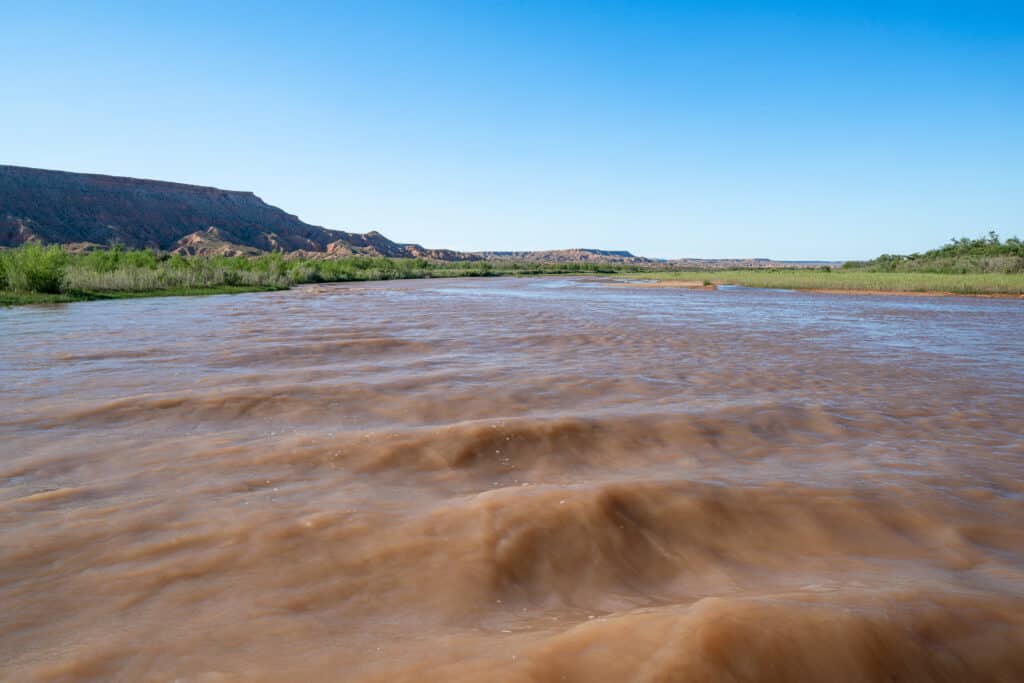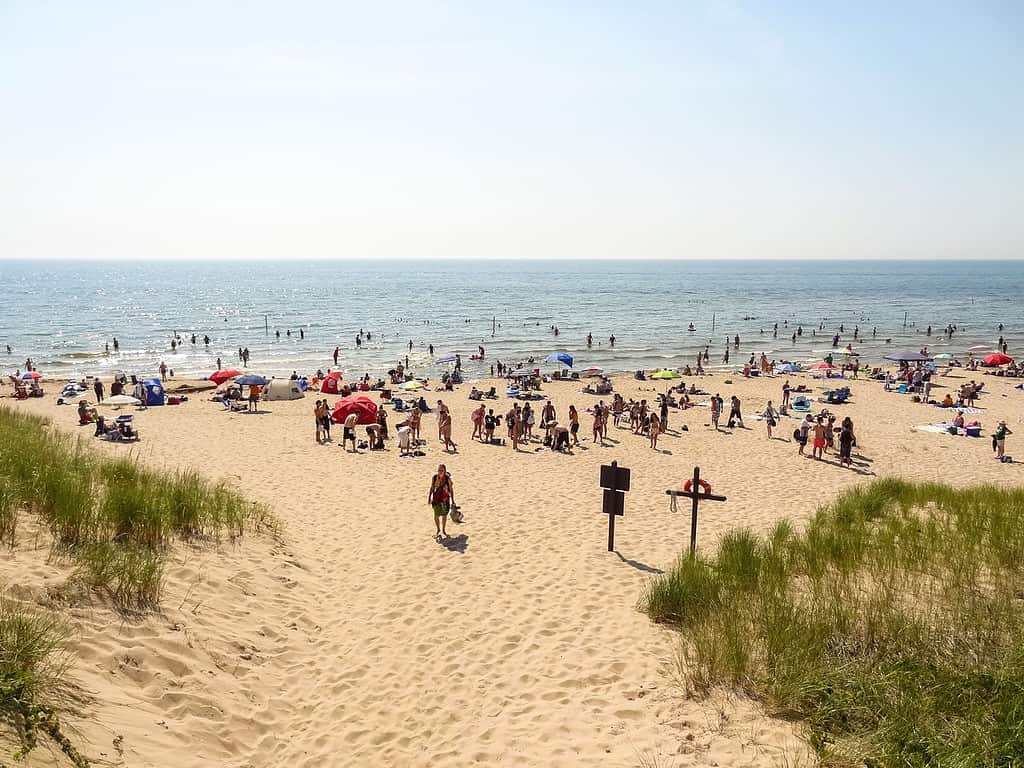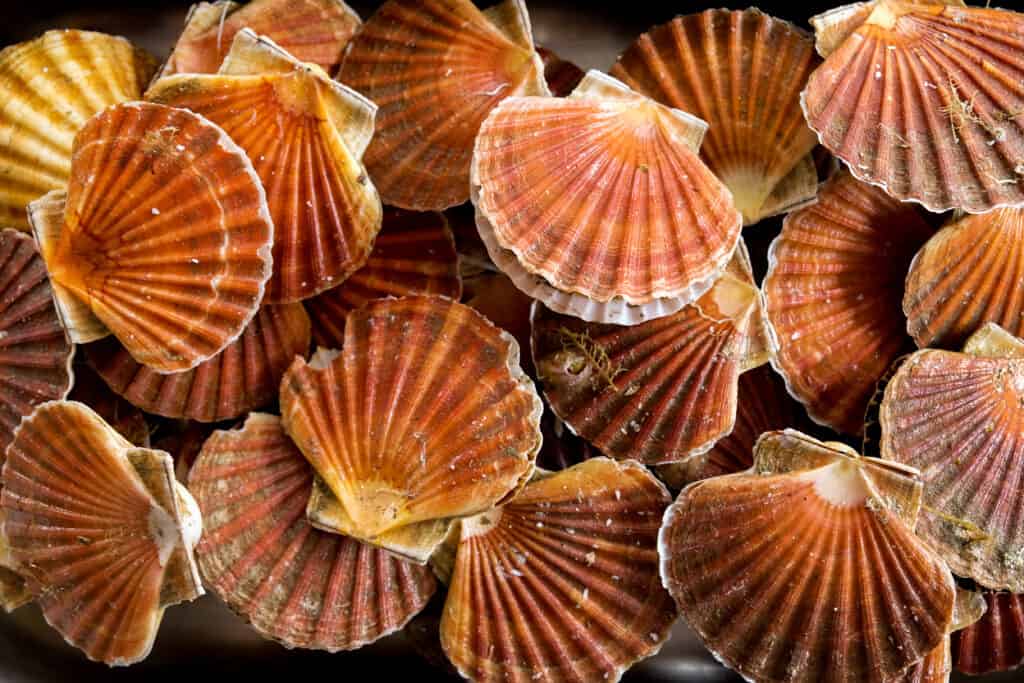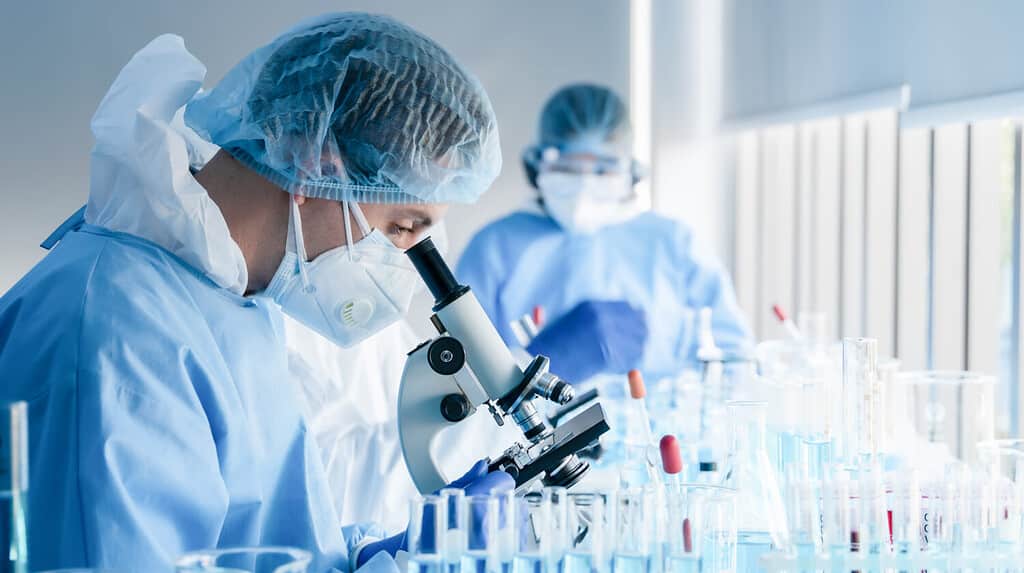
In high concentrations, brown tide can look a lot like a muddy river.
©Dominic Gentilcore PhD/Shutterstock.com
The brown tide is something people are starting to hear about more and more. Before, other dangerous tides like red tides or blue-green algae dominated the news. However, as these tides start to get worse and smother sea creatures that are unable to move out of their path, the concern is growing.
Every year, these tides grow worse and last longer. While they don’t seem to pose as direct a threat as other algae, they are starting to cause indirect threats by killing off plants and animals in the area. Scientists constantly monitor these algal blooms, but there’s still a lot to learn.
If you want to make sure you understand what causes a brown tide, and why they’re a concern, you’ll want to keep reading.
What Is Brown Tide?
Brown tide is a form of algal bloom. The alga responsible for brown tides is the Aureoumbra lagunensis alga. It wasn’t something scientists knew about until 1989, during the Laguna Madre bloom in Texas.
No other areas of the world besides the Gulf of Mexico have reported seeing this brown tide. This means that it’s likely a unique algal species in that area. However, the species is starting to spread.
At some point, it managed to be found along the coasts of Florida. In 2012, Aureoumbra lagunensis was found in lagoons inland. The alga grows in patches. Some areas of the water may be filled with dense brown algae. Other areas only show a very light brown color.
Areas around the East Coast also have their own brown tide. This species is Aureococcus anophagefferens. It was first discovered in 1985. Florida has the unfortunate luck of facing both versions of the brown tide, one on either coast. The state is home to a lot of important ecosystems and endangered animals along the coast. This means that understanding how brown tides work and the dangers they can pose is very important to biologists.
When Do Brown Tides Occur?
Brown tides tend to peak around June and July. It’s assumed that the algae stays around in the water all year but in much lower numbers than seen in summer.
Aureoumbra lagunensis appears to prefer temperatures between 68 and 77 degrees Fahrenheit. However, it’s able to keep growing slowly at low temperatures, such as over winter in the ocean.
Do Humans Cause Brown Tide?

Sometimes, people can cause algal blooms but that doesn’t seem to be the case for brown tides.
©Arthur Matsuo/Shutterstock.com
At the moment, there are no known ties to human activity and brown tide. It’s thought to be a natural phenomenon, and because there is so little information about the tide, it’s thought that there’s no way for humans to control its growth at this moment.
For both brown tides, there are no definitive causes known as of yet. There are a few suspects, but there’s been no proven connection. Some possible causes of brown tides considered are metals, citric acid, warm water, high salinity, and not enough algae-eating animals in the water.
Scientists have found no evidence that excess or too little rain causes a brown tide bloom. Instead, it seems like a series of factors all have to be in place for the brown tide to occur.
This alga seems to prefer nitrogen for its growth, but it can last for months in low-light environments. It also survives with little nitrogen by breaking down organic matter.
While there’s no direct cause of brown tide known as of yet, the tides are getting worse and worse every year, which means human hands or climate change might be affecting these two algae species, much like other algae.
Is Brown Tide Dangerous?

Scallops are one of the animals that are feeling the negative effects of brown tide.
©Gill Copeland/Shutterstock.com
Aureoumbra lagunensis brown tides never pose a direct danger to humans. There are no toxins yet found in any blooms of this alga.
While it may not be dangerous to humans, that doesn’t mean the brown tide doesn’t have any negative effects. During long and dense blooms, the water can get dark enough that it blocks out light trying to enter the water. This causes problems for plants such as seagrasses in the area.
Thankfully, that seems to be the limit of the dangers that brown tide poses to the local ecosystem. It doesn’t seem to hurt any mobile marine life like fish. With no danger posed to humans, fishing is still allowed, so it doesn’t affect recreational activities or the fishing trade.
Sometimes, it’s smart to move away from thicker patches of brown tide. Though it doesn’t cause injury to fish, they tend to avoid these areas where visibility is less. This means you’re less likely to come across fish in these areas.
Bivalves
When it comes to Aureococcus anophagefferens, there does seem to be a little bit of a danger to bivalves, such as mussels and scallops. These animals aren’t able to move away from the algal blooms, so when the densities of algae in the area increase to more than 200,000 cells per milliliter, some of these animals show severe negative effects.
The cause of these negative effects is still unclear. Some scientists suggest that it may be because the algae that cause brown tides tend to out-compete other algae that grow in the area and are more nutritious. This leads bivalves to only have this less nutritious algae to eat during dense blooms.
Near Long Island, Maryland, Delaware, New Jersey, Rhode Island, and even South Africa, Aureococcus anophagefferens has severely affected the scallop and oyster industry, as it killed off many of the shellfish and bivalves in the area.
Many scientists worry that while brown tides by themselves aren’t very dangerous, these tides compounded with other factors will lead to severe harm to local wildlife and plants. For example, in Florida, the time that brown tides are at their peak coincides with plankton blooms. This reduces the oxygen in the water and even further hampers visibility. Together, this is a serious threat to seagrass and the animals that depend on the seagrass bed habitat.
Inland Threats
With the algae starting to move inland, there’s another threat as well. In areas where manatees live, they already face a lot of danger from boaters who don’t always see these gentle animals. With brown tide limiting viability, it gets even harder to see them.
Manatees may also move away from their normal locations during times when the brown tide is extra thick so that they can eat grass that is thriving. They’ve been found to move to shallower areas, where the risks of boat injuries increase.
What Is Being Done About Brown Tide?

Tracking water samples helps to ensure that brown tides aren’t starting to create toxins.
©Mongkolchon Akesin/Shutterstock.com
As there is so little known about it, not much is being done specifically to combat brown tide. Since it’s not causing threats to humans or fish directly, it’s lower on the list of algae that needs to be stopped, unlike blue-green algae or red tides, which are both very harmful to wildlife and people.
Many of the steps done to mitigate these algae also seem to have positive effects on the brown tide, such as reducing pollution entering the water.
However, scientists are keeping an eye on it. Frequent tests are done on the bacteria and surrounding water to make sure that nothing has changed in terms of danger to people and animals. Scientists also hope that doing frequent studies and taking samples may make it easier for them to identify a cause at some point down the road.
The photo featured at the top of this post is © Mieszko9/iStock via Getty Images
Thank you for reading! Have some feedback for us? Contact the AZ Animals editorial team.







